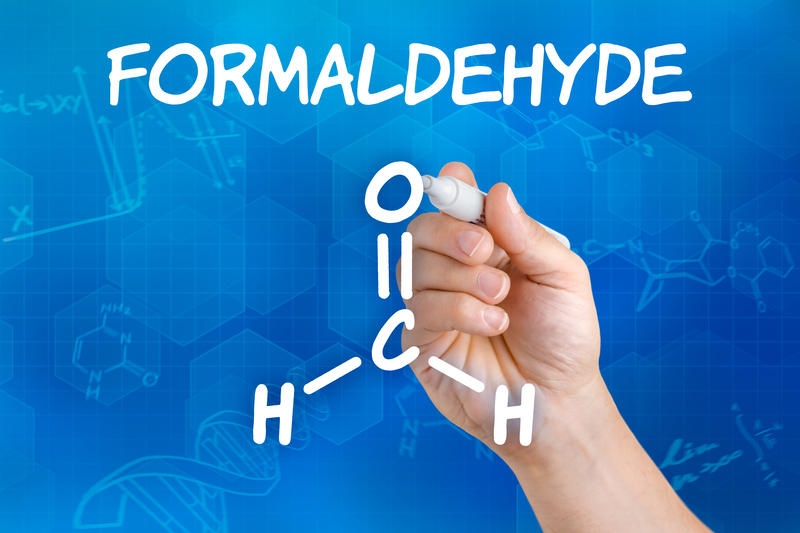Wave Goodbye to Grease: Simplifying Enamel Oven Tray Cleaning
Posted on 20/06/2025
Are you tired of battling greasy and stubborn stains on your enamel oven trays? Keeping your kitchen appliances sparkling doesn't have to be an exhausting challenge! In this comprehensive guide, we'll unveil expert tips and tricks to wave goodbye to grease and make enamel oven tray cleaning easier than ever before. Whether you're an avid baker or a home cook who loves to roast, mastering the art of cleaning enamel oven trays will not only enhance your cooking experience but also prolong the life of your ovenware.
The Importance of Properly Cleaning Enamel Oven Trays
Properly caring for your enamel oven baking trays brings a multitude of benefits. Beyond aesthetic appeal, clean oven trays prevent the transfer of burnt flavors and help maintain optimal food hygiene. Buildups of old grease and burnt food not only look unappealing but can also affect the taste, aroma, and safety of your dishes.
- Extended Tray Lifespan: Regular and correct cleaning preserves the enamel surface, reducing the risk of chips, cracks, and premature wear.
- Better Tasting Food: Clean trays eliminate old food residue and contaminants that can dull or alter your meals' flavors.
- Healthier Cooking Environment: Grease and grime can harbor bacteria and produce smoke when reheated, which affects kitchen air quality.
Common Challenges with Enamel Oven Trays
Enamel-coated trays are non-porous and durable, making them favored for heat distribution and easy food release. However, persistent stains, baked-on grease, and carbonized food debris can prove tough to remove. Scrubbing too harshly may damage the finish, while negligence can lead to layers of grime that seem impossible to conquer.

Understanding Enamel Oven Trays: What Makes Them Special?
Before diving into cleaning strategies, understand why enamel trays require special attention. Their glossy, vitreous coating is fused to metal at high temperatures, forming a hard, glass-like surface that's resistant to scratches and sticking food. However, misuse or incorrect cleaning techniques can dull that finish or even create cracks, allowing moisture and grease to penetrate beneath.
By following the right cleaning process, you'll keep your enamel oven tray functional and beautiful for years to come.
Expert Tips for Effortless Enamel Oven Tray Cleaning
Step 1: Cool Down Before You Clean
Never immerse a hot tray in cold water. The rapid temperature change may cause the enamel to crack. Always wait for the tray to cool to room temperature before starting the cleaning process.
Step 2: Initial Grease Removal
Discard excess grease and loose food scraps. Use a paper towel to absorb any remaining fat and use a soft spatula to remove stuck bits gently.
Step 3: Soaking with the Right Solutions
Soaking is the secret to simplified enamel oven tray cleaning. Here are the top homemade solutions:
- Warm Soapy Water: Fill the tray with hot water and a few drops of dishwashing liquid. Let it soak for at least 20-30 minutes. This helps loosen grease and grime.
- Baking Soda Paste: For stubborn stains, sprinkle baking soda over the surface, spray with water, and let it sit for an hour. Scrub with a soft brush or sponge afterwards.
- White Vinegar Boost: Add a cup of white vinegar to your soaking solution for extra degreasing power. The fizzing action helps dislodge the most persistent food residue.
- Lemon Power: Add slices of lemon to the soaking water. The natural acids cut through grease while leaving a fresh scent.
Step 4: Gentle Scrubbing Techniques
When it's time to scrub, always opt for non-abrasive tools:
- Soft sponges or microfiber cloths
- Old, soft-bristled toothbrushes for corners
- Avoid steel wool or abrasive scourers, which can scratch the enamel
Apply gentle, circular motions and give extra attention to tough spots. If necessary, reapply your chosen cleaning solution and let it soak again.
Step 5: Rinsing and Drying
Rinse the tray thoroughly under warm running water to remove all cleaning agents and loosened debris. Dry immediately with a lint-free towel to avoid water spots and keep the enamel finish gleaming.
Homemade Cleaning Solutions vs. Commercial Products
Which is best for grease removal from enamel baking trays--DIY solutions or store-bought cleaners? Both can be effective, but homemade cleaners using vinegar, baking soda, or lemons are non-toxic, eco-friendly, and affordable. However, busy households may appreciate heavy-duty commercial degreasers for tackling extreme messes (just ensure they're enamel-safe).
Top Commercial Cleaners for Enamel Oven Trays
- Enamel-Safe Oven Cleaner Sprays: Specially formulated to remove burnt-on grease without damaging enamel coatings.
- Oven Cleaning Gels: Thicker consistency allows for better coverage on vertical tray surfaces.
- Degreasing Wipes: Convenient for quick cleanups after cooking, ideal for maintaining a spotless tray.
Always follow the manufacturer's instructions. Test any new product on a small, inconspicuous area first.
Preventing Grease Buildup: Proactive Strategies
To truly wave goodbye to grease on your enamel oven trays, prevention is key. Following these simple strategies will make cleaning easier and keep your trays in pristine condition:
- Line Trays with Parchment Paper or Silicone Mats: This prevents direct exposure to fats and sauces, minimizing sticky messes.
- Wipe After Each Use: Once the tray cools, quickly wipe away excess grease with a paper towel instead of letting it harden.
- Tackle Spills Immediately: Don't allow juices or sauces to bake onto the surface. A quick clean between batches saves time later.
- Regular Deep Cleans: Incorporate a monthly or biweekly deep clean routine using your preferred soak-and-scrub method.
Dealing with Stubborn, Baked-On Grease and Stains
Even with regular maintenance, enamel oven trays can accumulate baked-on grease and carbon stains over time. Here's how to revive them:
- Baking Soda and Hydrogen Peroxide Paste: Mix into a thick spread and apply to stained areas. Let sit for an hour, then scrub with a soft sponge.
- Hot Baking Soda Soak: Fill the tray with very hot water and add half a cup of baking soda. Soak overnight, then scrub lightly in the morning.
- Enamel-Safe Scraper: Use a plastic scraper for large, stubborn pieces (never metal or knife edges!).
- Repeat as Needed: For truly persistent stains, repeat the process until clean, avoiding excessive force that could scratch the glaze.
Professional Tip: If your tray has stained patches or matte spots that resist cleaning, these may be permanent discolorations and not harmful as long as the enamel remains intact and smooth. Focus your efforts on removing active grease and food residue.
What NOT to Do: Avoiding Common Mistakes
To protect your enamel oven tray and ensure effortless cleaning, avoid these pitfalls:
- Leaving trays dirty for extended periods. Hardened residue is far harder to remove than fresh.
- Using abrasive pads, steel wool, or harsh chemicals that can scratch or dull the enamel finish.
- Sudden temperature shocks like immersing hot trays in cold water (risks cracking).
- Using dishwasher tablets on non-dishwasher-safe enamel trays. Check manufacturer guidance!
How to Clean Enamel Oven Tray in the Dishwasher
Many enamel oven trays are technically dishwasher safe, but with some caveats:
- Check Manufacturer Recommendations: If your tray is labeled dishwasher safe, load it on the top rack and avoid packing the washer too tightly.
- Rinse Before Loading: Scrape and rinse off as much food and grease as possible to prevent redeposit on dishes.
- Use Gentle Cycles: High-heat settings can sometimes cause enamel glaze to dull over time.
Dry trays thoroughly after the cycle to avoid water spots. Even if you use the dishwasher, a deep hand clean every few weeks will do wonders for longevity and looks.
Eco-Friendly and Natural Cleaning Methods
To reduce chemical exposure for your family and the environment, opt for these earth-friendly cleaning tactics:
- Baking Soda and Vinegar Combo: Let the natural fizzing action tackle tough spots without toxins.
- Lemon Juice for Shine: The acidity cuts grease and leaves your oven trays smelling fresh.
- Microfiber Cloths: Reusable, soft, and highly absorbent for wipe-downs.
Pro Tip: For the toughest, oldest stains, make a thick paste of baking soda and white vinegar. Apply, cover with a damp cloth, and let it rest overnight before scrubbing gently in the morning.

FAQs: All About Enamel Oven Tray Cleaning
- Can I use bleach to clean enamel oven trays?
It's best to avoid bleach, as it may degrade the enamel finish over time and leave behind harsh odors. Stick to gentler cleaners like baking soda, vinegar, or mild dish soap. - Why does my tray develop matte or discolored spots?
This can happen with age or heavy use, especially if acidic foods are frequently cooked. As long as the enamel is intact and smooth, this is usually harmless. - What's the fastest way to clean enamel oven trays after roasting meat?
Wipe away grease immediately after use (when cooled), then soak in hot soapy water for 30 minutes. A quick scrub afterwards is usually all that's needed. - How can I deodorize a tray with persistent odors?
Soak overnight in a solution of water, vinegar, and a few lemon slices. Rinse and dry thoroughly before next use.
Your Effortless Routine: The Last Word on Enamel Oven Tray Cleaning
With enamel oven tray cleaning simplified, you'll spend less time scrubbing and more time enjoying home-cooked meals. Remember: a quick daily wipe, regular soaks, gentle tools, and eco-friendly solutions are all you need to keep those glossy surfaces spotless. Wave goodbye to grease and welcome a new era of kitchen cleanliness and culinary confidence!
Ready to transform your oven cleaning routine? Start implementing these expert strategies today and keep your enamel oven trays shining for years to come!





